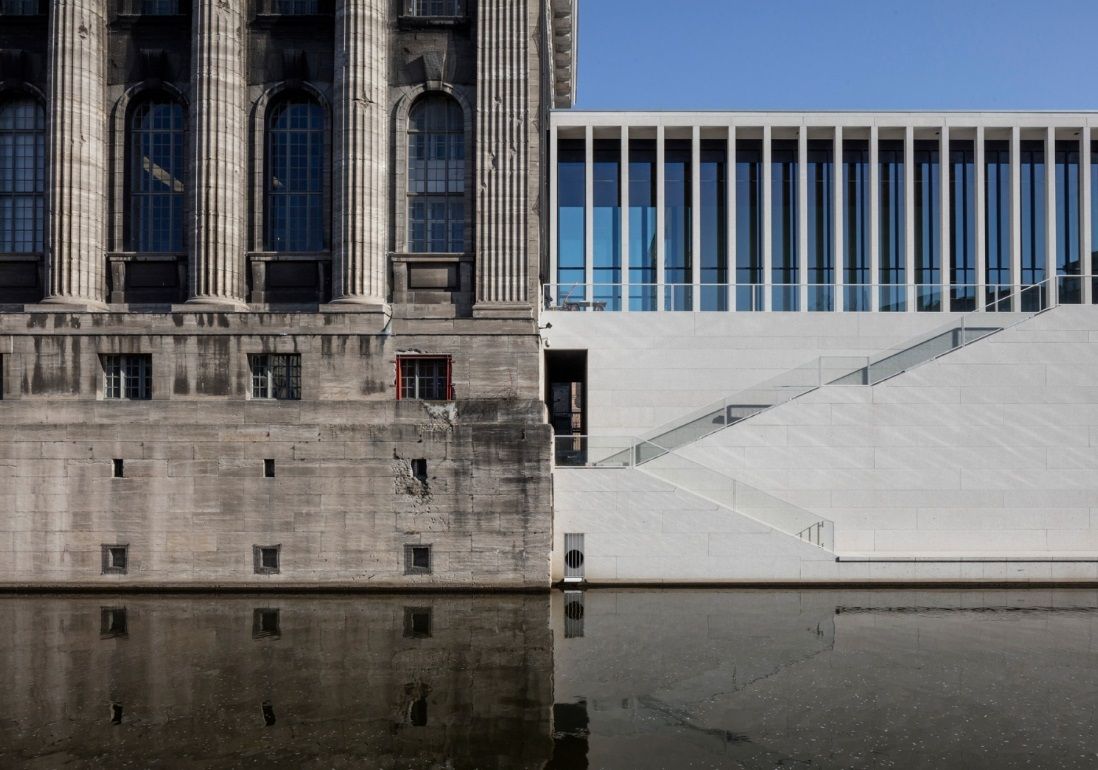Non-building as a creative form of architecture.
24.11.2025The online magazine archdaily regularly addresses fundamental questions of architecture. In this context, the article “The Architecture of Restraint: When the decision not to build becomes design”, which describes a growing trend in architecture that deliberately avoids new construction. Instead, existing buildings are maintained, repurposed or even simply left empty — an approach known as “architecture of restraint”. This approach is not passive, but very deliberate: it takes a great deal of decision-making ability, judgement and imagination to intervene only where it is really necessary and to design with as few resources as possible.
A key example is David Chipperfield’s restoration of the Neues Museum in Berlin, writes archdaily. He retained the ruins, which had been severely damaged during the Second World War, and added only what was absolutely necessary.
Materials were used that clearly contrast with the original — such as light-coloured brick, concrete and oak — without imitating or covering up the old building fabric.
The Sala Beckett in Barcelona, designed by Flores & Prats, also demonstrates this principle: traces in the building — faded frescoes, cracks, relics of previous uses — were deliberately not removed, but integrated into the new design. New walls are reversible, doors have been adapted rather than replaced. In this way, the history of the place becomes actively visible and part of its new use.
This type of architecture replaces the modern paradigm, which often tends towards destruction and a fresh start, with a patient pursuit of continuity, writes author Diogo Borges Ferreira. Instead of visually spectacular new buildings, a new beauty emerges through restraint: the empty space, the break, the incompleteness speak volumes.
Ethics play a major role here: the decision not to build new buildings is not only motivated by design considerations, but also a response to ecological limits. By preserving existing buildings, material consumption is reduced, demolition and the associated CO₂ emissions are avoided, and social structures are preserved.
A prominent example of this is the studio of Lacaton & Vassal: they work according to the motto “never demolish, never remove, never replace”.
When renovating apartment blocks in Bordeaux, for example, they retrofitted winter gardens and balconies without displacing the residents, which minimised resource consumption and preserved social cohesion.
Another approach comes from Rotor Deconstruction in Brussels: instead of treating materials as waste during demolition, components are carefully dismantled, catalogued, processed and reused. This changes the self-image of architects — they act not only as creators, but increasingly as mediators and curators.
This concept also takes on a new aesthetic language: many projects celebrate the unfinished, the fragmentary. One example is Peter Zumthor’s Kolumba Museum, which is built on the ruins of a Gothic church without hiding pieces of the old walls, but deliberately leaving them visible.
Ultimately, the article argues that not building should be seen as a radical, creative, but also responsible form of architecture. Design does not only take place through addition, but often through the wise decision to preserve, repair or do nothing – and therein lies a new, deeper form of design.
Read the full article here with detailed texts and more images.



